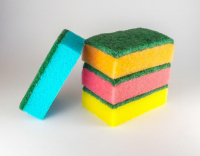Traditionally, designing an eBay HTML template from scratch required a deep understanding of HTML, CSS, and graphic design. For those without these technical skills, this meant either spending hours learning the ropes or hiring a professional to create the template for them, which could be costly. But what if there was an easier way to create customized eBay templates without the need for coding knowledge or graphic design expertise?
Fortunately, with the rise of user-friendly tools like Eselt, creating a professional eBay HTML template has never been easier. These tools allow sellers to design fully customizable templates that match their branding, fill them with all necessary product details, and upload them to eBay with just a few clicks. Whether you’re a new seller or an experienced one looking to streamline your listing process, Eselt provides an accessible, cost-effective solution that empowers you to create stunning eBay templates without the hassle of coding or graphic design.
Using Eselt to Create Your Own eBay Template
Eselt makes it incredibly easy to create professional and customizable eBay templates without any coding knowledge. With over 100 free eBay templates available, you have a wide variety of styles and designs to choose from, ensuring you can find one that aligns perfectly with your brand. These templates are fully customizable, allowing you to modify every aspect of the design to meet your specific needs.
Customization Options
Eselt's templates give you full control over the design, so you can tailor each element to your liking. Whether it’s adjusting colors to match your brand’s palette, adding logos, or tweaking the footer design, the options are endless. You can also personalize the cross-sales panels, incorporate product pictures, and even customize the bullet points for key product features.
Additionally, Eselt allows you to add important GPSR information, ensuring that your listings are fully compliant with the latest regulations. This is especially helpful for sellers who need to ensure product safety and regulatory compliance on eBay, which is increasingly important.
Easy Publishing
Once you’ve customized your template to perfection, publishing it to your eBay listing is a breeze. Eselt makes the publishing process seamless—all you need to do is copy the generated HTML code and paste it directly into the HTML code window on eBay’s auction creation page. There's no need to worry about complex coding or formatting issues. Eselt handles all the technical aspects for you, ensuring your template looks great and functions properly once it's live on eBay.
Eselt also provides step-by-step instructions on how to add your template to your eBay listings. Whether you’re a first-time seller or an experienced user, you’ll find the process clear and easy to follow, making the creation and publishing process straightforward.
Free Template Access
To make it even better, Eselt allows you to create up to 10 templates for free. This gives you the flexibility to experiment with different designs and layouts without any upfront cost. Once you’re happy with a template, you can start using it right away for your listings.
No Coding Required
One of the biggest advantages of using Eselt is that no coding skills are required. Whether you’re new to eBay selling or simply want to save time, Eselt simplifies the process by allowing you to create beautiful, functional templates with just a few clicks. You don’t need to worry about writing HTML or CSS—everything is handled through a user-friendly interface.
Image Hosting
Another great feature of Eselt is its image hosting service. Instead of having to upload your images to external hosting sites before adding them to your listing, Eselt automatically hosts all your images. This eliminates the need for additional steps, saving you time and reducing potential errors when uploading images to your eBay listings.
With Eselt, you can create stunning, professional eBay templates without the need for coding, graphic design skills, or complicated image hosting setups. The intuitive platform and customization options make it the perfect solution for eBay sellers looking to streamline their listing process and boost their sales.
How to Create an eBay Template from Scratch - A Coding Approach
Creating a custom eBay HTML template from scratch offers the flexibility to design a completely unique listing that suits your specific needs. This process, however, requires a combination of HTML (HyperText Markup Language), CSS (Cascading Style Sheets), and sometimes JavaScript, along with a good understanding of eBay's requirements and limitations. Below, we’ll walk you through the steps of creating an eBay template using coding.
1. Understanding eBay's HTML Code Window
Before diving into the technical aspects of creating a custom template, it’s essential to understand where you’ll input your code. On eBay, the HTML code window is located in the description section during the listing creation process. This is where you will paste the HTML and CSS code for your custom template. It’s crucial to access this section properly, as the HTML editor is where the template will take shape and be visible to potential buyers on your listing.
2. Setting Up the Basic Structure with HTML
The first step is building the basic structure of the template using HTML. HTML is the skeleton of your listing—it defines the content and layout. Typically, an eBay template will have several key sections: a header (which includes the product title and image), a product description section, a product details section (for features, specifications, etc.), and a footer with additional information like shipping details, terms, or contact info.
The key here is to establish a clear and organized structure. Each section of the listing should be well-defined so that both buyers and search engines can easily navigate the content. For example, the header might feature your product image, followed by a product description section that outlines the key selling points.
3. Styling the Template with CSS
Once your HTML structure is in place, you’ll need to style it using CSS to make it visually appealing. CSS controls how the content is presented, including aspects like color, font size, spacing, and layout.
To achieve a cohesive and professional look, you'll need to choose a color scheme that reflects your branding. Consider styling headings to stand out, adjusting the size and alignment of product images, and defining how the content will be arranged on different screen sizes (for example, ensuring that the layout is responsive on mobile devices). Keep in mind that the goal is not only to make the template look attractive but also to enhance user experience by ensuring the content is easy to read and navigate.
You can also customize the style of specific elements like bullet points, tables, and buttons. Using CSS, you can define the size, shape, and color of buttons, making them stand out and encouraging users to take action, such as purchasing the product.
4. Adding Custom Features
Once the basic design is set, you can further enhance your template with additional features. For instance, you might want to add call-to-action buttons like "Buy Now" or "Add to Cart" that link directly to your product listing. These buttons can be customized in terms of size, color, and placement, and they serve as a clear prompt for the user to make a purchase.
Another feature to consider is adding product carousels or gallery sliders, which allow you to showcase multiple product images in a dynamic and interactive way. This requires some basic knowledge of JavaScript or integrating pre-built scripts, but it can greatly enhance the visual appeal and functionality of your template.
Additionally, many sellers may need to include GPSR compliance information (the General Product Safety Regulation) within their eBay listings. For this, you might create a dedicated section in your template that allows you to enter the necessary safety information based on your product category.
5. eBay-Specific Considerations
When creating a template for eBay, there are some unique requirements to keep in mind. eBay’s platform imposes certain restrictions on the type of content and scripts that can be used within a listing. For example, JavaScript is often restricted in product listings for security and functionality reasons. Therefore, you should avoid using JavaScript for complex actions like pop-up windows or forms.
Another critical consideration is ensuring your images are hosted properly. Since eBay limits the size of images you can upload directly to your listings, it’s essential to host your product images externally, making sure they are accessible and correctly displayed in your template.
6. Testing and Troubleshooting
Once you’ve coded your eBay template, it’s important to test it thoroughly. Make sure all the links work, images display correctly, and the layout appears as intended on both desktop and mobile devices. Pay attention to how it looks on various screen sizes to ensure that the template is responsive.
In the testing phase, you'll also want to make sure that your template adheres to eBay's listing policies, such as image size requirements and content restrictions. If your template fails to meet any of these guidelines, you may face issues with publishing your listing.
7. Publishing Your Template on eBay
Once you’re satisfied with your custom template, it’s time to add it to your eBay listing. As mentioned earlier, you will paste your HTML and CSS code directly into the HTML code window in eBay’s auction creation page. Make sure to double-check the layout and content before submitting the listing to ensure everything looks as it should.
While creating an eBay HTML template from scratch gives you complete control over your listing’s design, it requires both time and technical expertise. If you’re comfortable with coding and want a truly customized listing, building your template can be a rewarding process. However, for those who want a quicker, easier solution without the need for coding, tools like Eselt provide a much more accessible option to create professional-looking templates with minimal effort.










